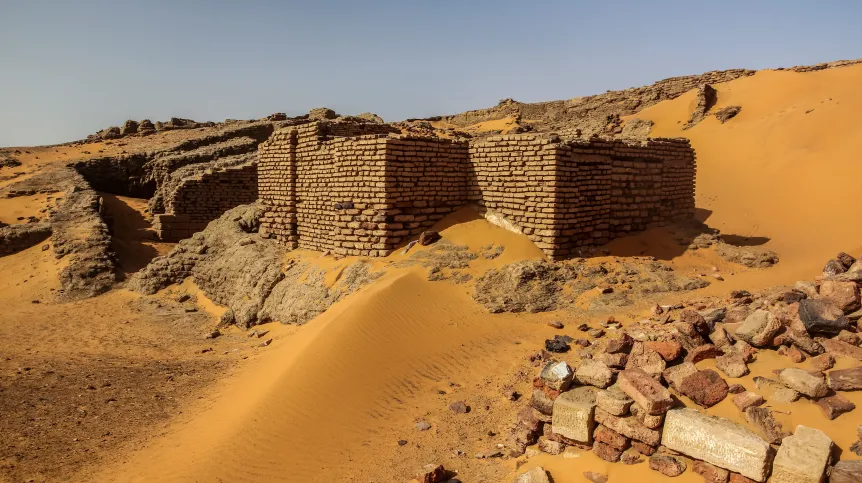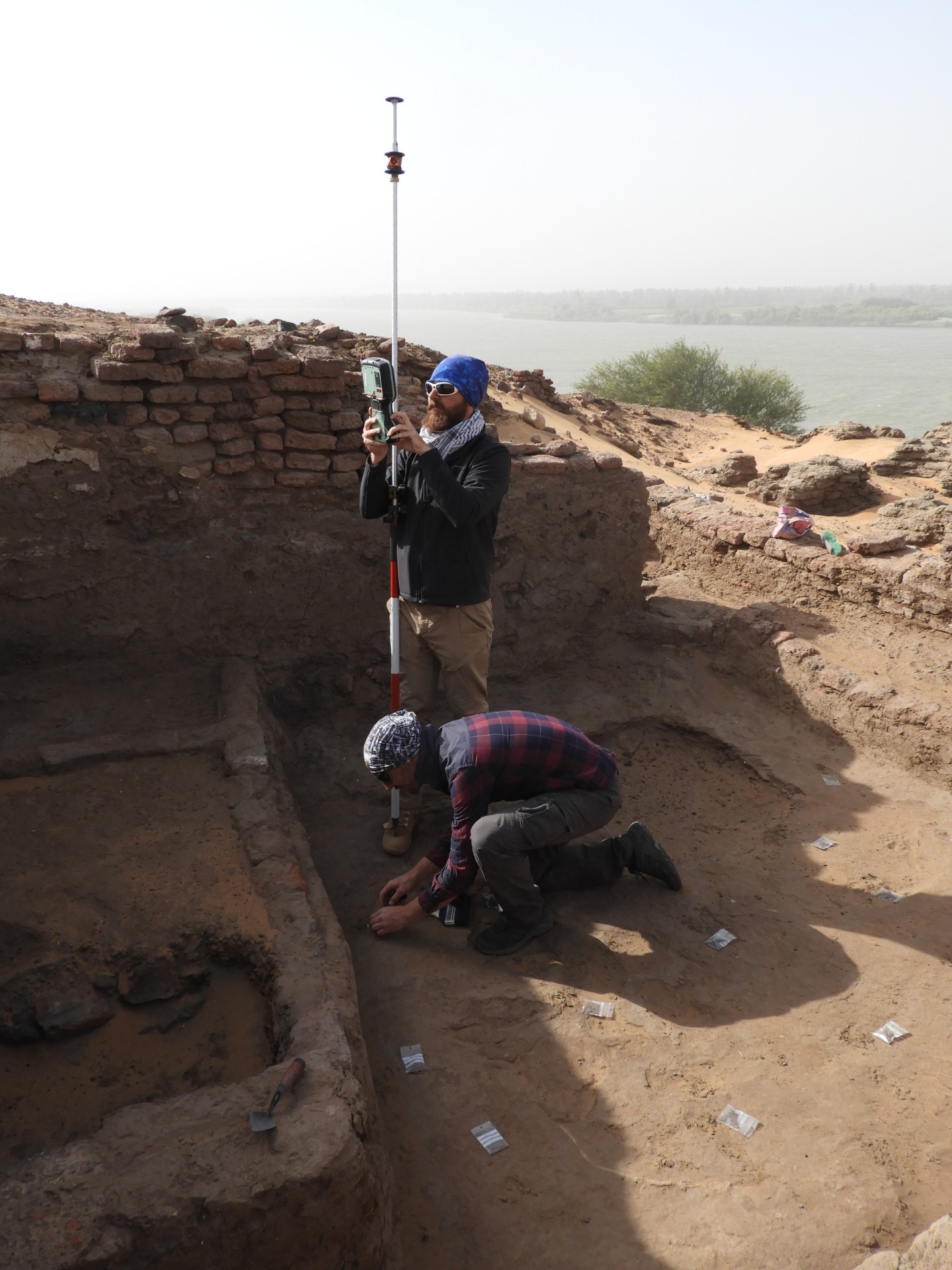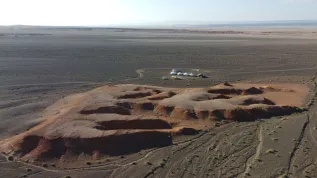
In the houses of Old Dongola (Sudan), most of the housework took place in the common spaces of the vestibules or courtyards, where people cooked, spent time and kept animals. The form of houses did not change over the centuries, unlike the function of the rooms, scientists from the Polish Centre of Mediterranean Archaeology, University of Warsaw have found.
From the 5th to the 14th century, Old Dongola was the capital of the Kingdom of Makuria, one of the most important states of the African Middle Ages. It was located in a historical land called Nubia, in what is now Egypt and Sudan. Researchers from the University of Warsaw analyse the process of its transformation from an important Christian centre into a Muslim city in the period between the 14th and 19th centuries.
One of the elements of their work was the analysis of several houses that existed in Dongola over the course of four centuries (14th-17th century). They wanted to find out what the houses of that time looked like, how the living space and everyday life were organized.
'The main challenge was the fact that in most cases no tools were preserved inside the houses that would indicate what the space was used for', says Dr. Maciej Wyżgoł, author of the study.
The researchers decided to use multi-element analysis of floors in several houses. They took a few grams of the top layer of the substrate. They described the results in several publications, the most recent of which appeared in the Journal of Archaeological Science: Reports.
'The method itself is based on the assumption that human activities, even those invisible in the remaining archaeological material, leave an identifiable multi-element trace. All household activities: cooking, keeping animals, cleaning, sleeping - all this should be reflected in the multi-element composition of floors and other usable area', says Dr. Wyżgoł.
The house that scientists analysed in the latest study consisted of a vestibule, a courtyard, living and sleeping space, and a storage room. According to the analyses, most of the life took place in the vestibule.

Wyżgoł says: ‘It turned out that very large concentrations of the elements: phosphorus, potassium, iron, which are part of plant and animal tissues, were found in the central part of the vestibule. This indicates that people did household activities, cooked, spent time and kept animals there. This was somewhat surprising because earlier analyses of other houses indicated that many household activities took place in the courtyard. However, in the case of the last house we examined, the courtyard was rather a transitional space, an entrance to the house.
'The method itself is based on the assumption that human activities, even those invisible in the remaining archaeological material, leave an identifiable multi-element trace. All household activities: cooking, keeping animals, cleaning, sleeping - all this should be reflected in the multi-element composition of floors and other usable area’.
He adds, however, that for now it is difficult to determine more precisely where, for example, meat was eaten and where it was cooked, because the elemental pattern for these activities is very similar.
The exception is the space where people probably slept. No concentrations of elements were recorded there. This means that it was reserved for 'clean' activities that did not leave dirt.
That room was equipped with mud brick benches, placed behind a wall built directly next to the door. It visually separates the space inside from what is outside. Architecturally, this solution maintains the privacy of the residents and indicates that the place can be described as a bedroom.
'The house described in the paper consisted of a corridor leading from the street to the courtyard, where - as we found - not much was happening. Then from the courtyard there was a passage to the vestibule, where a significant part of everyday life took place. From the vestibule one could enter a clean room, most likely a bedroom, and the storage space where various products were kept', Wyżgoł says.
Almost all the houses there looked the same, except for the so-called king's house, which stood out. The houses examined by archaeologists were located in the centre of the city, separated from the rest by a city wall.
According to the archaeologist, the form of these houses provided great opportunities for various uses of home space. Therefore, the social and religious changes that took place over the centuries in Old Dongola, related to the transition from Christianity to Islam, were not associated with changes in the form of houses. However, the way the specific parts of houses were used may have changed. 'In several houses that we examined earlier, the courtyards were used differently, for example food was prepared or animals were kept there', Wyżgoł says.
The co-author of the publication in the Journal of Archaeological Science: Reports is Professor Barbara Woronko from the Faculty of Geology, University of Warsaw. This research is related to the larger project 'UMMA - Urban Metamorphosis of the community of a Medieval African capital city', carried out in Sudan under the supervision of Dr. Artur Obłuski, a professor at the University of Warsaw and director of the Polish Centre of Mediterranean Archaeology, University of Warsaw. The research was carried out as part of the Polish National Science Centre Prelude grant.
PAP - Science in Poland, Ewelina Krajczyńska-Wujec
ekr/ agt/ kap/
tr. RL













